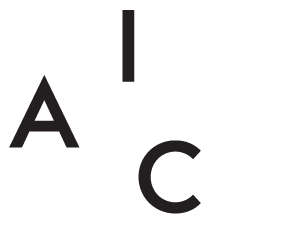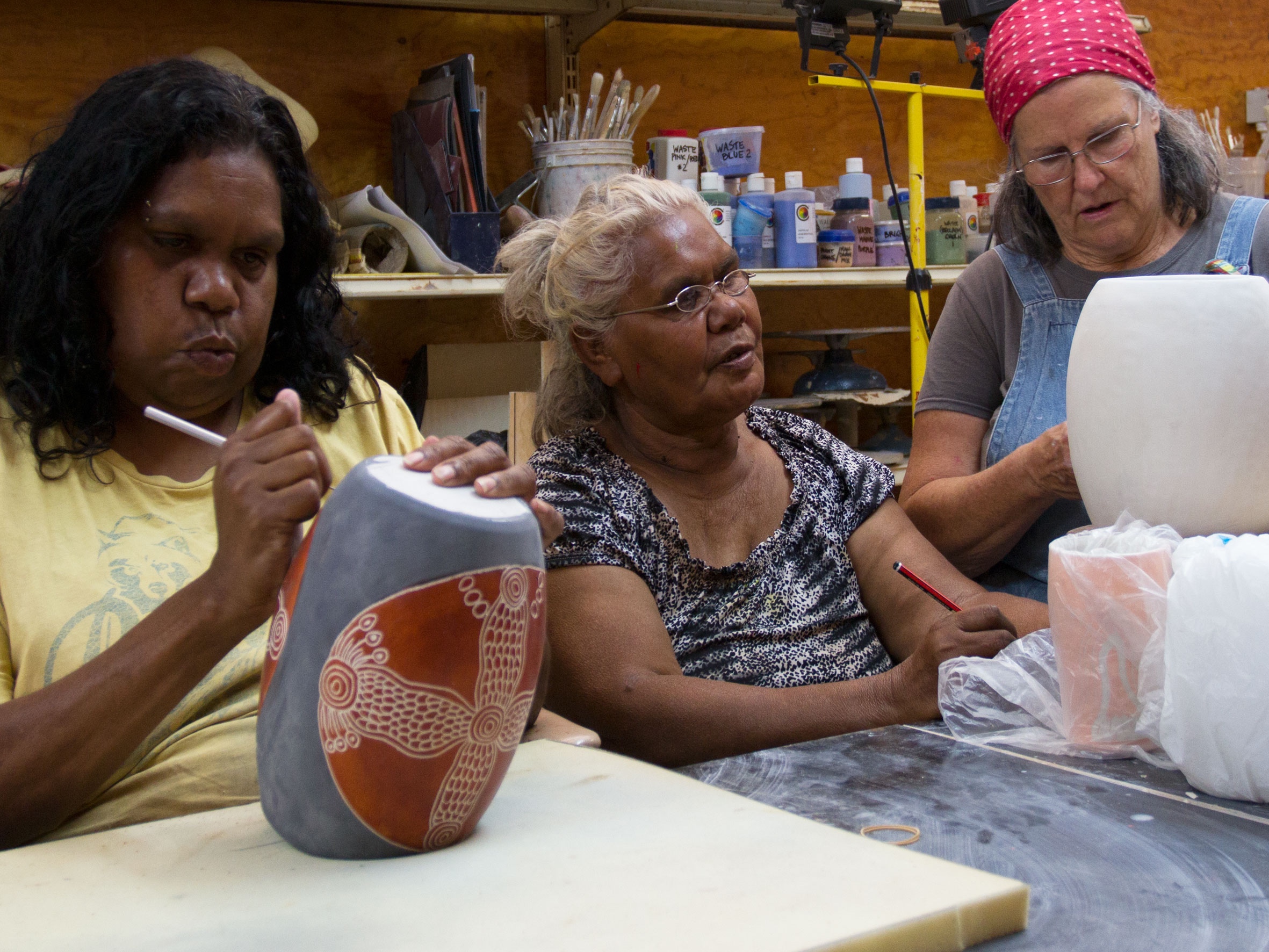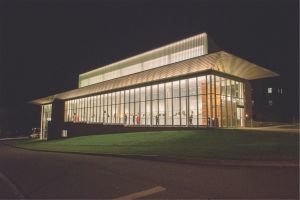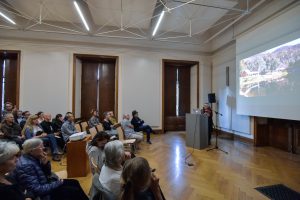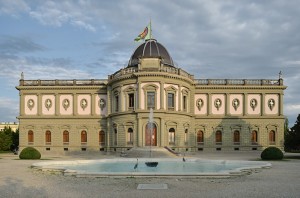Gained in Translation: Contemporary Indigenous Ceramics in Australasia
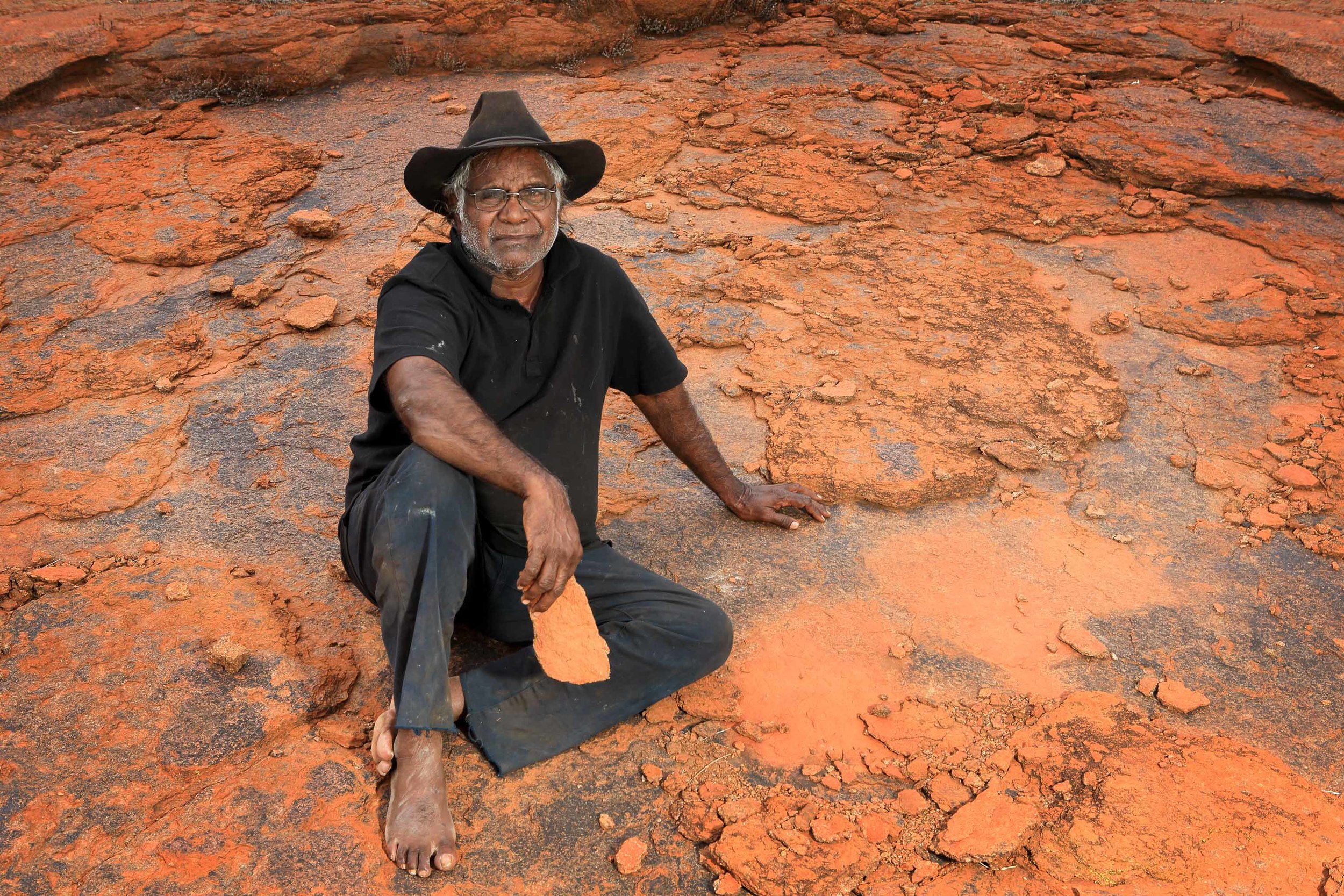 Mr Jack |
|
|
|
|
Janet DeBoos Janet DeBoos is a ceramic artist and a member of the IAC Council. Her practice is represented in many major public collections. She taught at the Australian National University until 2013 and was awarded the title of Emeritus Fellow. She has been invited as Visiting Faculty at many university art schools around the world. Janet DeBoos has authored two best-selling books on glaze. |
|
|
Neither the Maori in New Zealand nor the indigenous Australians (Aboriginal and Torres Strait Islanders) had a traditional pottery culture. Clay was used, but for body painting and traditional healing practices. It had significance, but not as a material that could be shaped and moulded, and used to contain things, or shaped to represent other things. This was because the clay itself represented something – it was ‘Country’. By ‘Country’ the indigenous people of Australia mean their ancestors, who ARE the country. The hill doesn’t just look like an ancestral lizard- it is the lizard, as other formations are the creation serpent, commonly known as The Rainbow Serpent. In the coastal regions of Australia- and especially in the north, there are trees that provide a smooth bark that can be peeled off in certain seasons, and was used as a canvas to paint with naturally coloured clays – ochres. These ‘barks’ are what is often seen as ‘Aboriginal Art’, but in fact represents only a small portion of what was produced. The fact that they are transportable meant that they could be commodified in a way that body painting and rock art could not. |
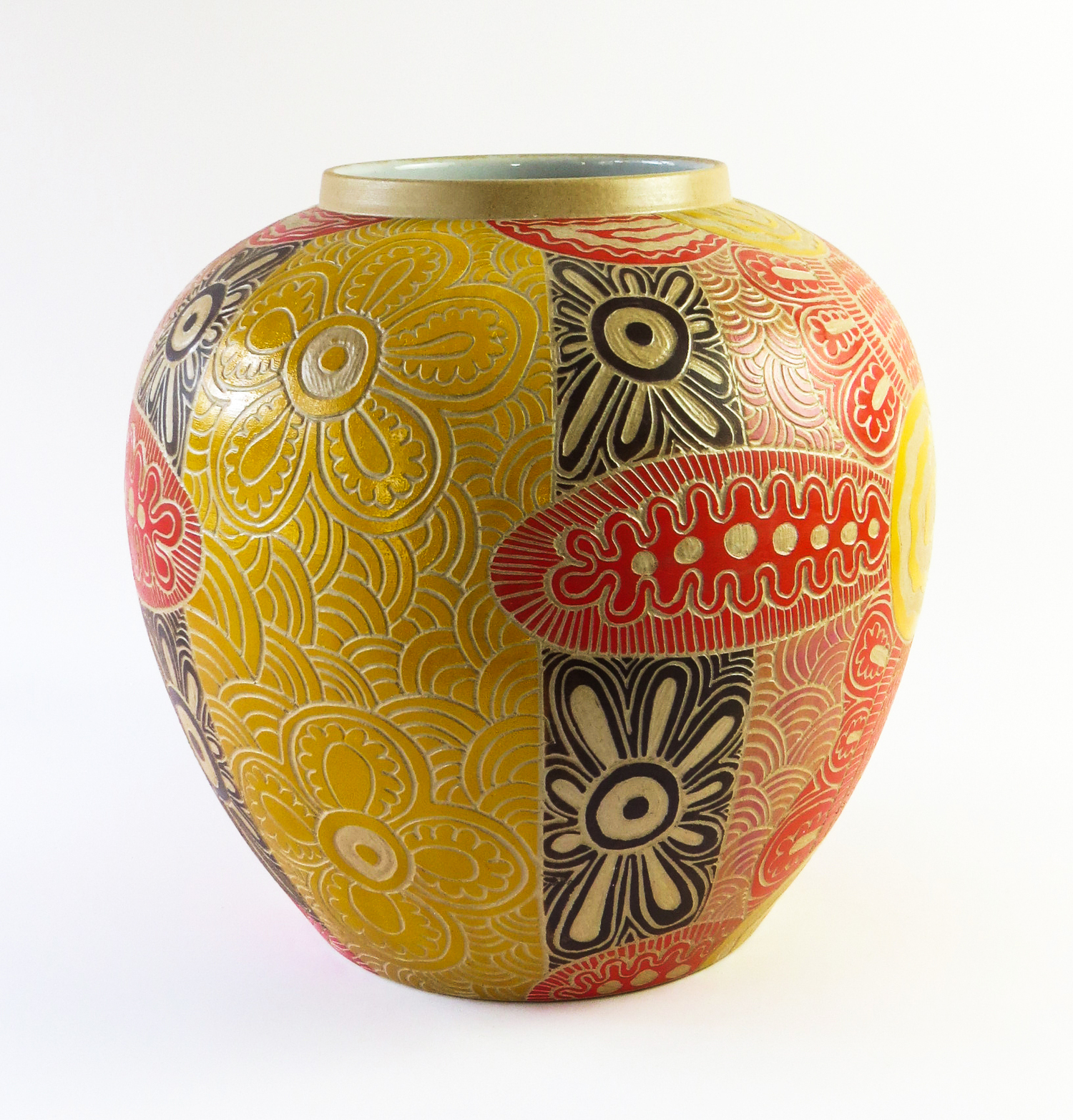 Tjimpuna Williams |
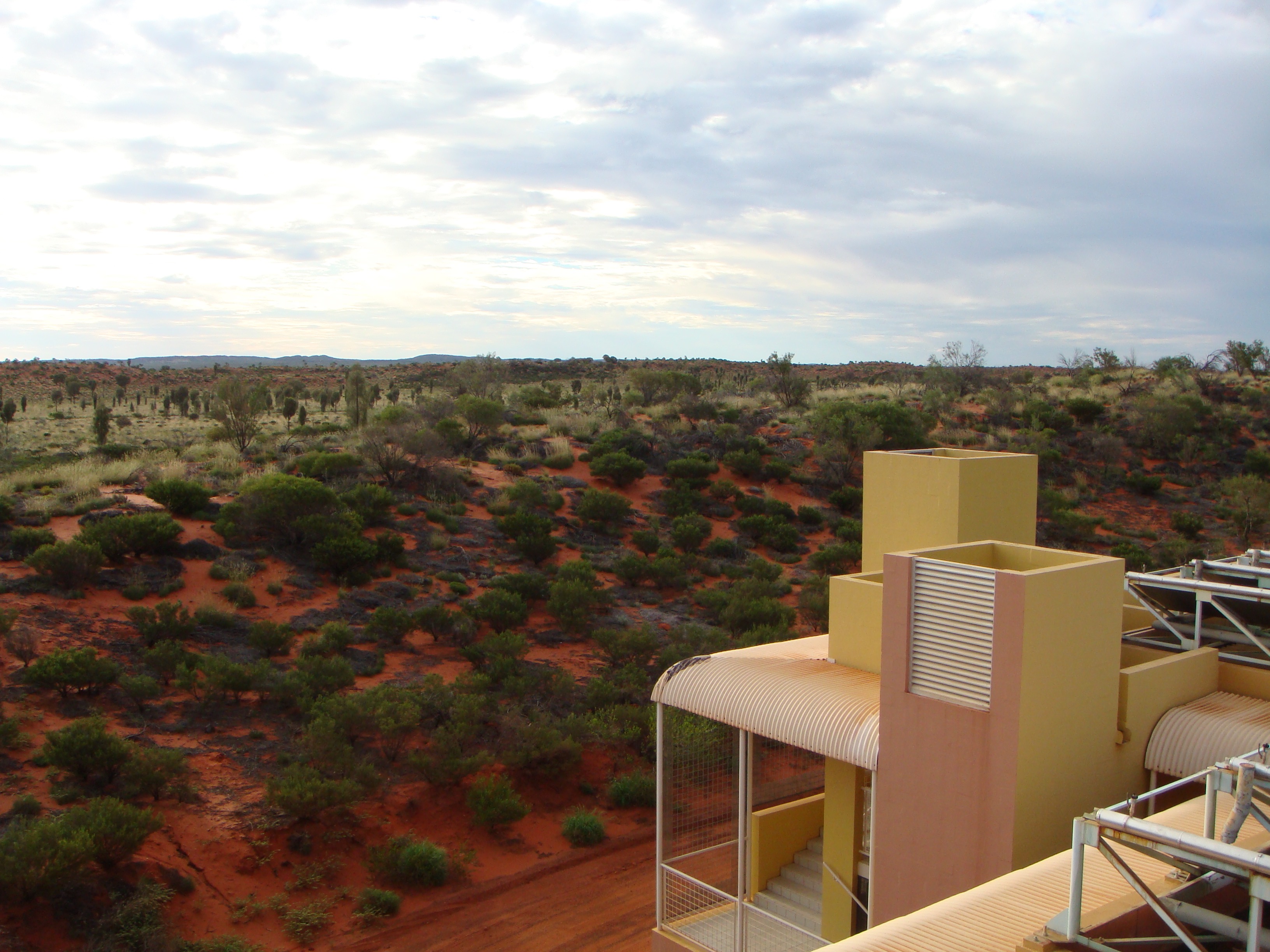 Country (Yulara Resort) |
|
|
These bark paintings were made with small twigs, chewed to create a slight bristle at the end, and so are characterised by straight lines in the drawings, rather than the curvilinear nature of desert art. The imagery in them is often also more representative, and depicts marine life such as turtles, crocodiles and fish. Their artists often characterise themselves as ‘Saltwater men’ (and ‘men’ because painting was a male artform). In this talk we will follow a project that started eleven years ago at an Australian National Ceramics Conference, Verge (Sustainability for the Individual and the Collective) in Brisbane. It started at an exhibition of ceramics from three Remote Indigenous Communities that had been curated by a colleague, Geoff Crispin. Geoff had a long history of working on ceramics development projects in Australia, Africa, Indonesia and the West Indies. The exhibition brought together people from Remote Communities in Central Australia and the Tiwi islands to the north of Darwin. Some of the artists had never left their communities, some had travelled widely, but none of them knew ceramic artists from areas other than their own.
|
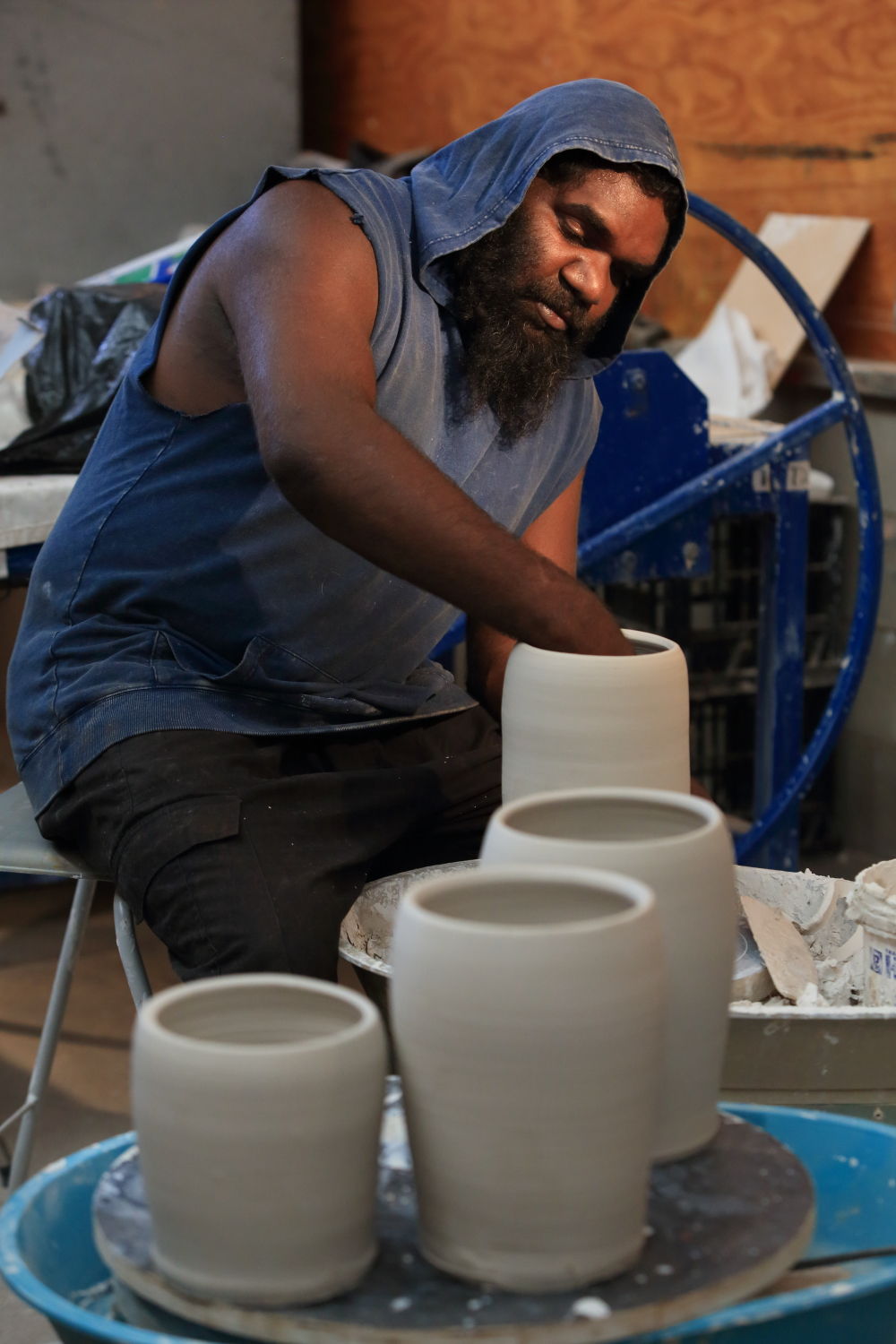 Ngunytjima Carroll throwing They wanted to meet again, and talk with the ‘other mobs’, so Geoff conceived, planned and assisted them to apply for grant money to undertake such a project. Even the grant application was something of an artwork, as the indigenous Australians have a non-literate culture, and so a video application in which the artists spoke, rather than wrote, was requested, and delivered. |
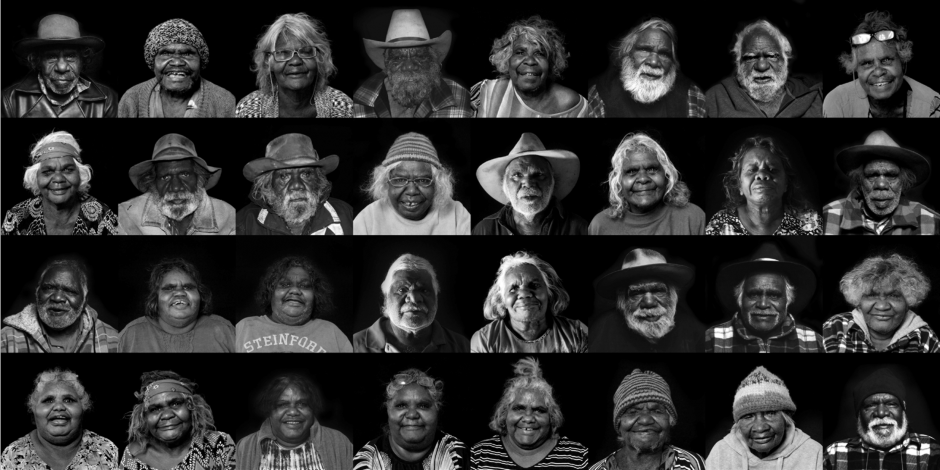 senior APY Lands artists |
|
|
My role in this project was to provide a link to an educational institution and connections with the broader art world, and so the Australian National University (where I was Head of Ceramics) was brought on board as a partner. 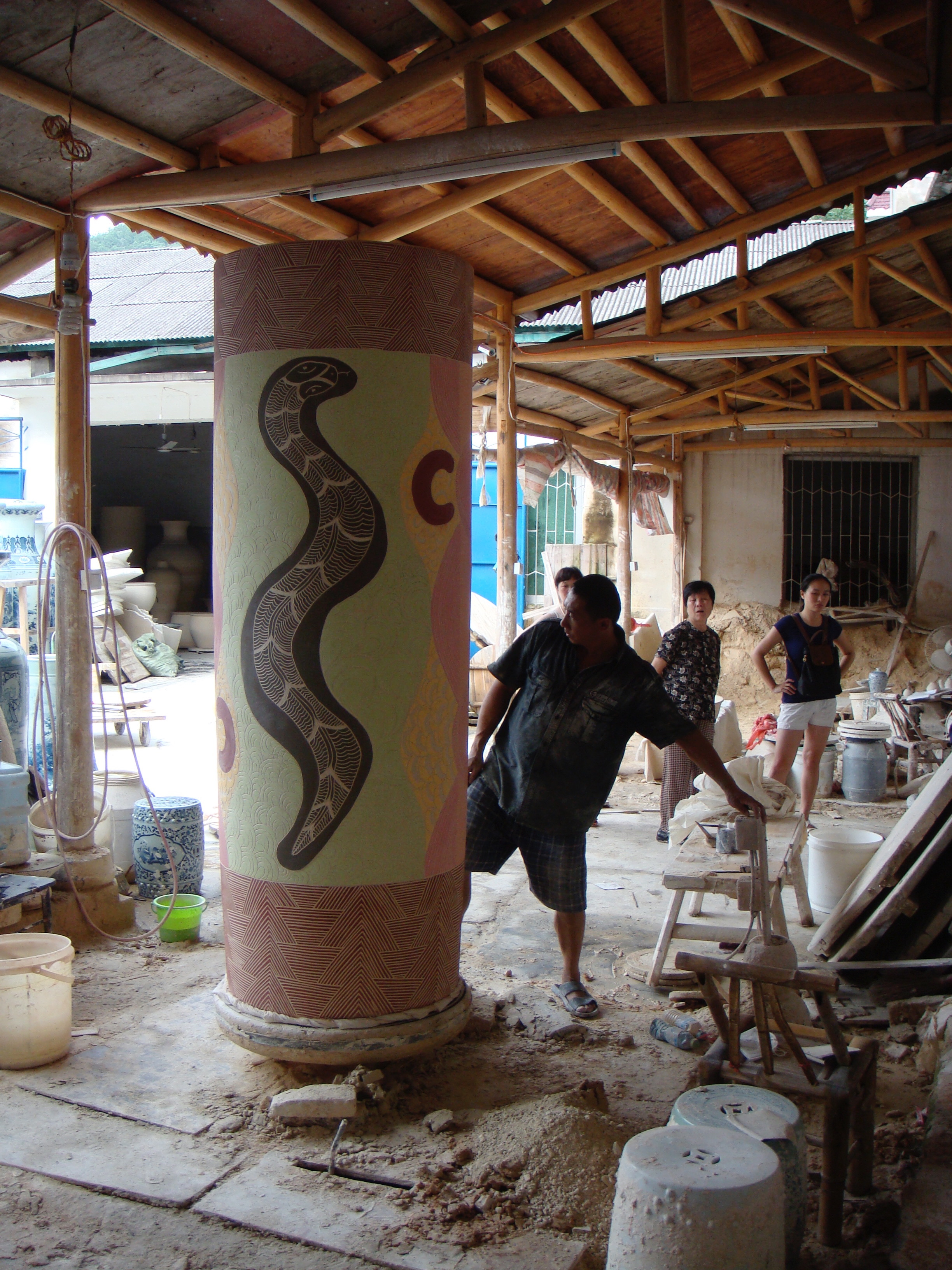 Derek’s Wanapi pot, jingdezhen, China |
The project has continued to this day, changing shape as needs changed and opportunities came up. We have taken the artists to Singapore to participate in the Awaken the Dragon kiln festival, where they exhibited at Red Dot Gallery, and also to China twice, where they worked at Jingdezhen. It is this last cultural exchange that I will focus on, as it has in some ways summed up the intent, and the outcomes of a project that now has its own energy. My role has been reduced to that of occasional technical troubleshooter, liaison for young artists who want to work with communities, or planner when another opportunity comes up.
|
|
|
|
Treasure House of North America: The Alfred Ceramic Art Museum at Alfred University
Wayne Higby, Director and Chief Curator of the Alfred Ceramic Art Museum
(read more...)5th IAC DAY
Every two years, the International Academy of Ceramics hosts a series of lectures at the Ariana Museum.
(read more...)IAC DAY Lectures
Since 2009, the biennial 'IAC DAY' is held at the museum with Council members.
(read more...)